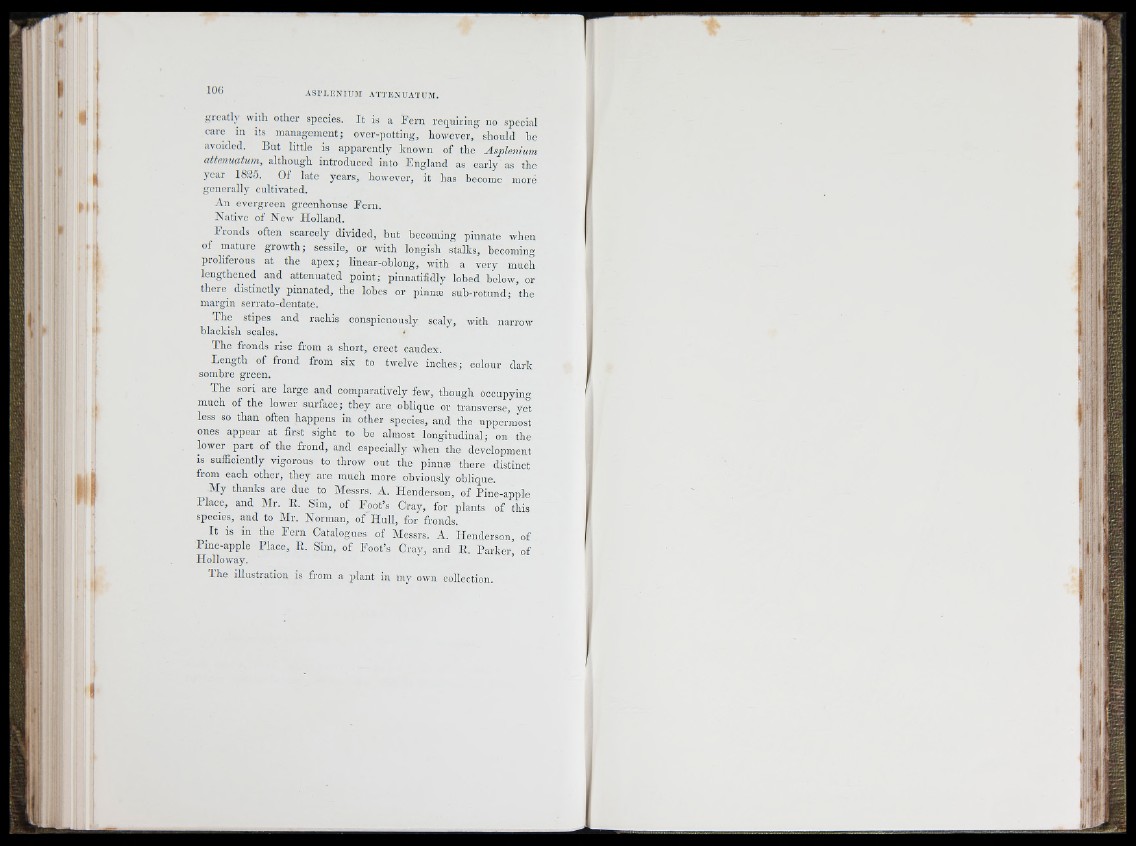
I I
Mi
gioatlv ivitli otlicr species. It is a Fern requiring no special
earo in its management; ovcr-potting, however, sliould be
avoided. But little is apparently known of the Asplenium
attenuatum, although introduced into England as early as the
year 18.2.5. Of late years, however, it has become more
generally cultivated.
An evergreen greenhouse Fern.
Native of New Holland.
l ’ronds often scarcely divided, but becoming pinnate when
of mature growth; sessile, or with longish ¡talks, becoming
proliferous at the apex; linear-oblong, with a very much
lengthened and attenuated point; pinnatifidly lobed below, or
there distinctly pinnated, the lobes or pinnæ sub-rotund; the
margin serrato-dentate.
The stipes and rachis conspicuously scaly, with narrow
blackish scales. •
The fronds rise from a short, erect caudex.
Length of frond from six to twelve inches; colour dark
sombre green.
The sori are large and comparatively few, though occupying
much of the lower surface; they are oblique or transverse,' yet
less so than often happens in other species, and the uppermost
ones appear at first sight to be almost longitudinal; on the
lower part of the frond, and especially when the development
is sufficiently vigorous to throw out the pinnæ there distinct
from each other, they are much more obviously oblique.
Aly thanks are due to Alessrs. A. Henderson, of Pine-apple
Place, and Air. 11. Sira, of Foot’s Cray, for plants of this
species, and to Air. Norman, of Hull, for fronds.
It is in the Fern Catalogues of Alessrs. A. Henderson, of
Piiie-apple Place, E. Sim, of Foot’s Cray, and P . Parker, of
Holloway.
The illustration is from a plant in my own collection.